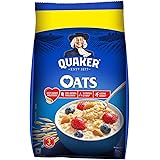INS 551 is another name for Silicon dioxide, a natural chemical mixture of silicon plus oxygen. It finds use in umpteen food products in the form of an anti-caking agent. INS 551 is one of the most widely used food additives that are in use today. However, individual agencies plead for strict guidelines concerning the quality as well as characteristics of INS 551 present in food items.
In case an individual inhales the fine particles of this chemical, it can have an adverse impact. Also, exposure to silica dust for a more extended period can pose severe threats to life. However, consumption of INS 551 in food is safe, as it is known to have negligible detrimental impacts on health.
Table of Contents
Basic Know-How About INS 551
Silicon dioxide is a combination of two highly abundant materials that occur naturally, that is, silicon and oxygen. Silica is available in diverse forms. Though they have different names, all of them have a conventional composition. The name differs based on the arrangement of particles.
Generally, INS 551 is known to have two groups: crystalline silica and amorphous silica. Incidentally, the INS 551 occurs naturally in the human body, even though it’s difficult to explain its role.
Related Reading:
All you need to Know about Acidity Regulator INS 330
Natural Sources of INS 551
There are many natural sources for the INS 551. As per the Agency for Toxic Substances and Disease Registry (ATSDR), it is very easy to recognize INS 551. Ranging from plants and animals to water, it is present in almost all naturally occurring objects.
1. Quartz
The most common name by which it is known is quartz, comprising about 12% of the earth’s crust.
Many beaches have silica sand, and the composition of a lot of rock types on earth also contains INS 515. It is surprising to know, but silica-containing minerals make up around 95% of the earth’s crust.
2. Green Veggies
It is also present in plenty of plants that humans consume. It’s also found in beets, bell pepper, and alfalfa. It is present in dark leafy greens such as kale.
3. Grains and Cereals
It’s also found in grains and cereals, including oats and brown rice.

Quaker Oats 1kg, Rolled Oats Natural Wholegrain, Nutritious Breakfast Cereals, Dalia Porridge, Easy to Cook
₹166.00 (as of January 8, 2025 16:00 GMT +05:30 - More infoProduct prices and availability are accurate as of the date/time indicated and are subject to change. Any price and availability information displayed on [relevant Amazon Site(s), as applicable] at the time of purchase will apply to the purchase of this product.)Uses of Anticaking Agent Silica (INS 551)
INS 551 finds use in plenty of areas. From the glass and cement industry to the food industry, this additive has many uses.
1. Making glass and cement
Silica present in INS 551, is used in the making of the glass and cement industry.
2. Used as a food additives
INS 551 is used as a food additive as well as an anti-caking agent in the food industry and prevents food from forming lumps.
3. Increases the shelf life
In addition to food additives, it offers protection against the unfavorable impacts of moisture. This further enhances the shelf life of food products.
4. Helps in binding
Last but not least, it plays a vital role in helping all ingredients in powder form from sticking together, ensuring a smooth flow, for example, dried milk.
Side Effects of using Anticaking Agent Silica (INS 551)
Despite being considered safe for human consumption, one of the main concerns revolving around INS 551 is its size.
1. May cause issue in gastrointestinal tract
Nanoparticles of silica are used in food products, which means that these have access to human cells. However, studies show that when eaten, INS 551 has a low possibility of crossing the gastrointestinal tract. The silica particles above nanosize are probably safe, offering no risk of toxicity to humans.
2. Causes respiratory problems
INS 551 dust on inhalation causes respiratory problems. It might even cause silicosis, lung cancer, chronic obstructive pulmonary disease, and tuberculosis.
3. May cause autoimmune diseases
Kidneys might also get affected, if inhaled or consumed in excess quantity, causing autoimmune diseases.
Frequently Asked Questions
Here we have answered a few FAQs about INS 551.
1. Is INS 551 safe for consumption?
Silicon dioxide occurs naturally, and if you consume INS 551 in small quantities, it will not be of any threat to your health. One thing that you must be aware of is that there are various grades of silica.
The one used in making cement is different from the one used as food additives. The Food and Drug Administration (FDA) in the United States strictly regulates the way companies employ silica in food.
2. Is INS 551 vegan?
INS 551 is vegan as well as vegetarian as it is derived from quartz and sand.
You can also find out whether the food additive is vegan/vegetarian by reading the label of the package where it is mentioned or clearly marked as green/red.
3. What is INS 551 made of?
INS 551 is derived from naturally available quartz, which is abundantly available in the earth’s crust. It is available as a white and powdered substance.
Final Words
While there are no current pieces of evidence that in any way suggest that INS 551 is unsafe for human consumption, people do tend to take into consideration the pros and cons of INS 551 as well. There is still research being conducted that lays more emphasis on the particle size of INS 551 as well as the limit which is safe for human consumption.



